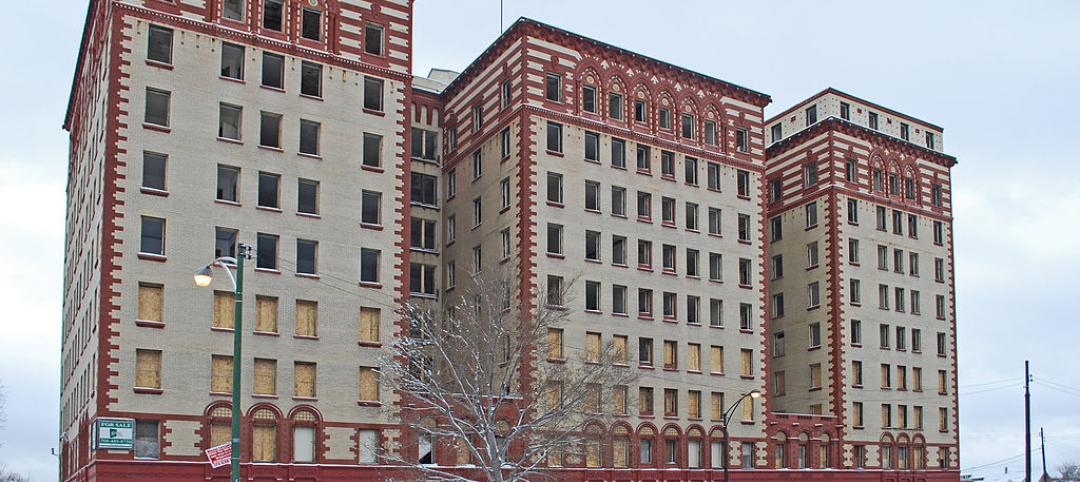On May 24, The Shed, a non-profit cultural organization that’s backed by some of the heaviest hitters in New York City, announced the completion of erecting the structural steelworks for the telescoping outer shell of a 200,000-sf artistic center, also called The Shed, under construction in Lower Manhattan’s west side.
This announcement came one day after former New York Mayor Michael Bloomberg said that he would be donating a total of $75 million to this project through his Bloomberg Philanthropies.
That brings to $421 million that amount that has been raised so far from this project’s $500 million capital campaign, according to the New York Times. The Shed’s benefactors include media mogul Barry Diller, and Stephen Ross, chairman of the builder/developer Related Companies.
While in office, the Bloomberg administration rezoned the area running roughly from 30th Street to 41st Street, and between 8th and 11th avenues for its ambitious redevelopment plan that included Hudson Yards and The Shed. Bloomberg personally spearheaded the idea of placing a cultural center in the midst of this office-heavy redevelopment. Construction of The Shed began in 2015 and should be completed next year.
When it opens in the Spring of 2019, The Shed will run along the popular High Line elevated walkway and garden. The organization is leasing the land, and will lease the building, from the city.
“This will be a platform for art, for artists to create on,” says Daniel Doctoroff, a former deputy mayor who is chairman of the board of The Shed. He said Bloomberg’s mandate for this project was that it be “unique” and put the lower west side “on the cultural edge.”

David Rockwell of The Rockwell Group (left) and Liz Diller of Diller Scofidio + Renfro talk about how The Shed was designed to be as flexible as possible to accommodate the uncertain artistic world of the future. Image: BD+C
Elizabeth Diller, a partner with Diller Scofidio + Renfro, which with The Rockwell Group designed the center, says this project forced the Building Team to think about what the arts would be like in 10 to 15 years. Their conclusion was that this is unknowable, so the building needed to be designed with the utmost flexibility.
A manifestation of that flexibility is a gigantic movable shell, open on three sides, which can be deployed over a 20,000-sf open plaza to create a 17,500-sf hall whose lighting, sound, and temperature can be controlled. The 8-million-pound shell is mounted on 6-ft-diameter wheels that roll along slide rails. The structure, operated by 90-horsepower motors, can be opened or closed within seven minutes.

The Shed's movable shell sits on steel wheels, 6 ft in diameter, that roll on slide rails. Image: BD+C
The movable shell rises 135 feet above the plaza, and can support up to 4,000 tons of building systems and production equipment. Its exposed steel will be clad in translucent pillows of ETFE, a Teflon-based polymer, some of whose panels will measure 70 ft in length.
The plaza would have a theater seating capacity of 1,250 and a standing capacity of 3,000. (By comparison, New York’s Radio City Music Hall seats just over 6,000 people; and the city’s Beacon Theater seats roughly 2,900.)
The shell retracts into a base building with eight floors, each designed for multiple uses. The top floor will house a 3,300-sf rehearsal space, a 9,500-sf flexible events space, and a 1,700-sf labs dedicated to early-career local artists.
Below that is an 11,700-sf, 500-seat black-box theater that can be subdivided into three smaller performance spaces. The building will also include two levels of galleries with a combined 25,000 sf of exhibit space and 19-ft-high ceilings.
Back-of-house space for offices and mechanicals, dressing rooms, and storage is on the first floor.
In charge of programming The Shed is Alex Poots, the organization’s Artistic Director and CEO. Previously, Poots was founding Director of the Manchester International Festival, and Artistic Director of New York’s Park Avenue Armory. He said The Shed would “welcome artists and audiences from all walks of life.” The Shed has already launched a free, citywide residency program in dance activism for young people, Flex NYC, in cooperation with Reggie Gray of D.R.E.A.M. Ring dancers.
The organization also just hired Kevin Slavin as its Chief Technology Officer. Slavin comes from MIT's Media Lab.
Other Building Team members include Thornton Tomasetti (SE), Sciame Construction (CM), Hardesty & Hanover (kinetic engineering services), Jaros Baum & Bolles (MEP, FP), Levien + Co. (owner’s rep), Cimolai (structural steel), Cimolai Technology (kinetic services), and Stonebridge (steel erection).
Related Stories
| Mar 26, 2014
Zaha Hadid's glimmering 'cultural hub of Seoul' opens with fashion, flair [slideshow]
The new space, the Dongdaemun Design Plaza, is a blend of park and cultural spaces meant for the public to enjoy.
| Mar 25, 2014
Sydney breaks ground on its version of the High Line elevated park [slideshow]
The 500-meter-long park will feature bike paths, study pods, and outdoor workspaces.
Sponsored | | Mar 21, 2014
Kameleon Color paint creates color-changing, iridescent exterior for Exploration Tower at Port Canaveral
Linetec finishes Firestone’s UNA-CLAD panels, achieving a one-of-a-kind, dynamic appearance with the first use of Valspar’s new Kameleon Color
| Mar 20, 2014
Common EIFS failures, and how to prevent them
Poor workmanship, impact damage, building movement, and incompatible or unsound substrate are among the major culprits of EIFS problems.
| Mar 13, 2014
Do you really 'always turn right'?
The first visitor center we designed was the Ernest F. Coe Visitor Center for the Everglades National Park in 1993. I remember it well for a variety of reasons, not the least of which was the ongoing dialogue we had with our retail consultant. He insisted that the gift shop be located on the right as one exited the visitor center because people “always turn right.”
| Mar 12, 2014
14 new ideas for doors and door hardware
From a high-tech classroom lockdown system to an impact-resistant wide-stile door line, BD+C editors present a collection of door and door hardware innovations.
| Mar 7, 2014
Chicago's 7 most threatened buildings: Guyon Hotel, Jeffrey Theater make the list
The 2014 edition of Preservation Chicago's annual Chicago's 7 list includes an L station house, public school, theater, manufacturing district, power house, and hotel.
| Mar 5, 2014
5 tile design trends for 2014
Beveled, geometric, and high-tech patterns are among the hot ceramic tile trends, say tile design experts.
| Mar 4, 2014
First look: Historic grain silo to become soaring art gallery
British architect Thomas Heatherwick has proposed to repurpose a grain silo into an art gallery in Cape Town, South Africa. The silo is made up of 42-concrete tubes, which Heatherwick plans to make into gallery spaces.
| Feb 28, 2014
Six finalists selected in design competition for Canadian Holocaust monument
David Adjaye and Daniel Libeskind are among the finalists for the National Holocaust Monument, planned near the Canadian War Museum in Ottawa.

















